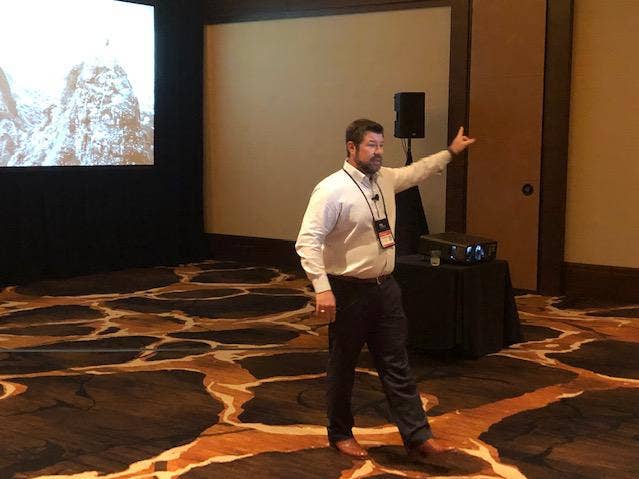How 'Moneyball For Business' Can Solve Your Employee Engagement Woes

Knowing what drives your employees isn't just optional for businesses that want to keep wotkers engaged, and keep them from leaving. It's essential.
That was the message from Brandon Kinsey, owner and president of Houston-based Kinsey Management LLC, who spoke to an audience of solution providers Monday during XChange 2019.
[Related: Author Kevin Brown: Be A Hero By Helping Others ‘With No Strings Attached’]
Kinsey used the example of "Moneyball," the book and movie chronicling how data analytics became pivotal for team-building at the Oakland Athletics (and ultimately, in all of baseball). He urged the solution providers in attendance to bring a "Moneyball for business" approach to their talent base--where data from sources such as the Predictive Index can be used to understand where the disconnects are between employees, managers and organizations overall.
"It's not about trying to make people 'happy,'" Kinsey said during XChange 2019, held this week in Las Vegas and hosted by CRN parent The Channel Company. "You have to make them feel valued. They have to feel like what they're doing matters. We have to show them that the work is valuable and it actually means something."
Kinsey tackled the four major areas where employees tend to become disengaged—around job fit, manager fit, culture fit and team fit.
If you design each role carefully—and then hire for the role and continue making investments to inspire the employee—"you can keep these four forces of disengagement at bay," Kinsey said.
All of these issues can be addressed by analyzing the results of the Predictive Index, which determines what most drives each employee and what they don't care as much about, Kinsey said.
"Any time you have people who are more highly engaged, productivity and profits are higher," Kinsey said.
Disengagement, on the other hand, can cost more than $50,000 when lost productivity and the expense of finding a replacement is taken into consideration.
Each employee and manager will have some mix of drives for dominance (influence), extraversion (social interaction), patience (consistency and stability) and formality (conforming to rules and structure)--and this unique mix of drives is revealed by the Predictive Index results, Kinsey noted.
Diagnosing the reasons that an employee or manager's productivity is sagging can sometimes just come down to comparing the employee's Predictive Index results with their manager's, Kinsey said. For example, the results might predict that a certain employee will have an especially hard time with being micro-managed, suggesting that they should not be matched with a manager who has these tendencies based on their own Predictive Index results.
Measuring, analyzing and using this data is a proven way to address employee engagement issues, but the organization’s talent strategy must be worked on and expanded continuously, Kinsey said. "You can't just do it once a year," he said.
Juan Fernandez, vice president of managed IT services at Oklahoma City-based ImageNet Consulting, told CRN that "the greatest opportunity that we have in business is to really harness the power of people."
"The solutions will sell themselves, products sell themselves. It's not about that. It's about creating quality, effective teams, and using the data to actually scatter plot your employee engagement," he said.
Fernandez said he plans to stay in touch with Kinsey, because "if I could help the rest of my sales teams engage with my technical teams, and with management teams, and know whether or not we're going to be successful, that would really help us in our go-to-market strategy."
Fernandez said he's sold on the idea of using data in this way to "improve the employee experience, improve work-life balance, make everyone really want to come to work, and really deliver a product that will help us see the next 100 years of being a company. This is huge for me."